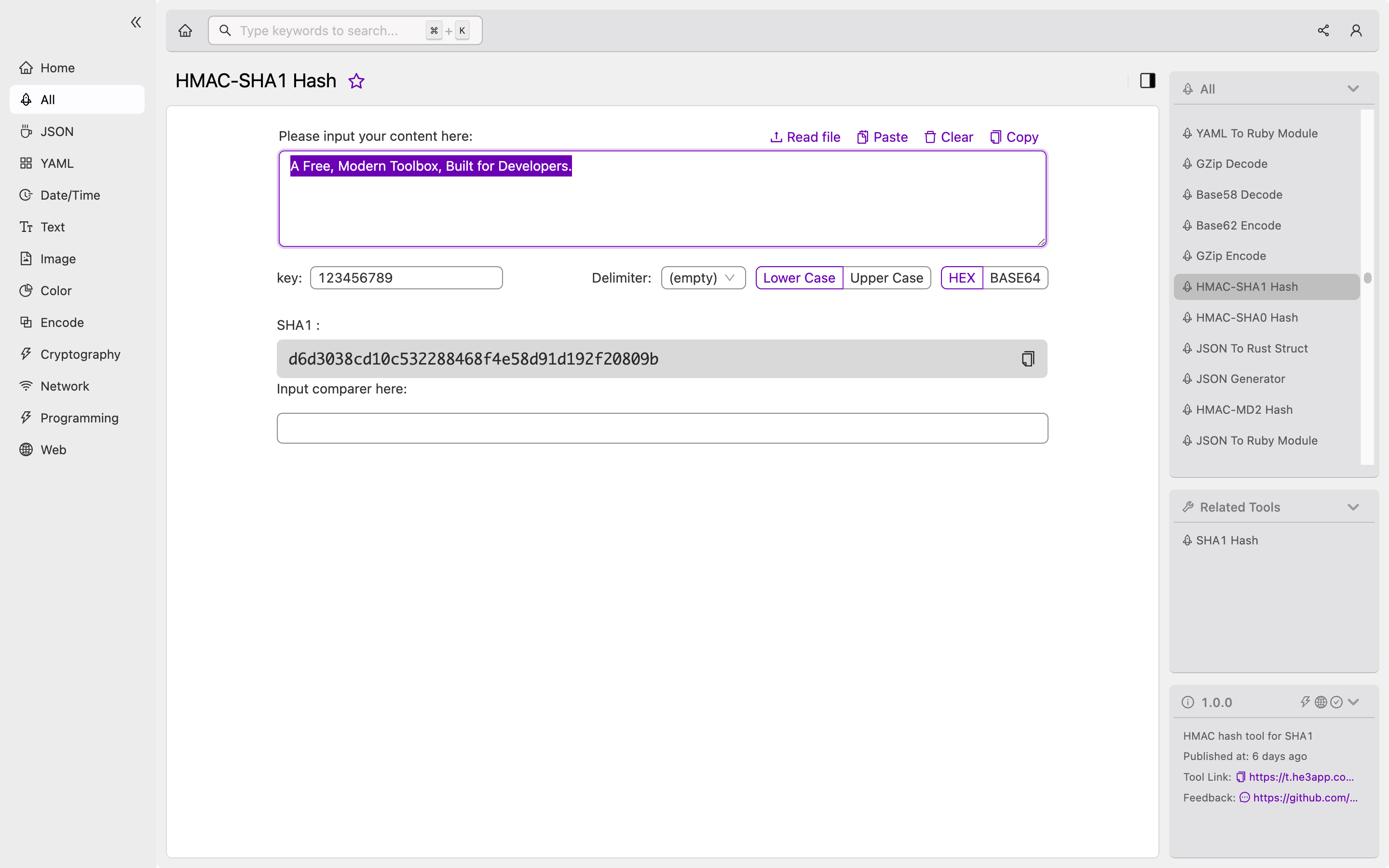Introduction
In the realm of cryptography, authentication is crucial to ensure data is not tampered with. HMAC-SHA1 Hash is a widely known algorithm that provides message authentication. It works by calculating a hash of the given data using a secret key, which can then be used to verify the integrity of the data.
How it works
HMAC stands for “Keyed-Hash Message Authentication Code,” and SHA1 stands for “Secure Hash Algorithm 1.” HMAC-SHA1 Hash combines these two cryptographic functions to provide message authentication. It works by taking the original data and a secret key, then generating a cryptographic hash by repeatedly modifying and encrypting the data with the key.
The resulting hash is unique to the original data and the secret key, and any modification to the data or the key results in a different hash. This makes it useful for verifying the integrity of the data, as any tampering will result in an invalid hash.
Sample code
To calculate an HMAC-SHA1 hash using Python, you can use the hmac library. Here is an example:
import hmac
import hashlib
data = b"Hello, world!"
key = b"my_secret_key"
hash = hmac.new(key, data, hashlib.sha1).hexdigest()
print(hash)This will output the HMAC-SHA1 hash of the data using the key.
Scenarios for developers
HMAC-SHA1 Hash is most commonly used for message authentication in various applications. It can be used to verify the integrity of data sent over a network or stored in a database. It is also used in digital signature schemes, where the hash of the data is signed with a private key to provide non-repudiation.
Key features
| Feature | Description |
|---|---|
| Message authentication | Provides assurance that the data has not been tampered with |
| Keyed Hashing | Secret key used to calculate the hash |
| SHA1 encryption | SHA1 used for the cryptographic hash |
| Widely available | Supported in many programming languages and libraries |
Misconceptions and FAQs
Misconception: HMAC-SHA1 Hash should be used for encryption.
HMAC-SHA1 Hash is not used for encryption but for providing message authentication. It does not encrypt the data but calculates a message digest that can be used to verify its integrity.
FAQ 1: Can I use the same key for multiple messages?
No, it is recommended to use a unique key for each message to ensure security. Using the same key for multiple messages can make it easier for an attacker to predict the key and tamper with the data.
FAQ 2: Is HMAC-SHA1 Hash still secure?
While HMAC-SHA1 Hash is still considered secure, it is recommended to use stronger algorithms such as HMAC-SHA256 or HMAC-SHA512 for new applications. This is due to the increasing computational power available to attackers, which can potentially weaken the security of HMAC-SHA1 Hash.
How to
Or you can use HMAC-SHA1 Hash tool in He3 Toolbox (https://t.he3app.com?myvg) easily.

Conclusion
HMAC-SHA1 Hash is a powerful tool for message authentication. It provides assurance that the data has not been tampered with and is widely available in many programming languages and libraries. While it is still secure, it is recommended to use stronger algorithms for new applications. For more information, check out the Wikipedia page on HMAC and SHA1.
